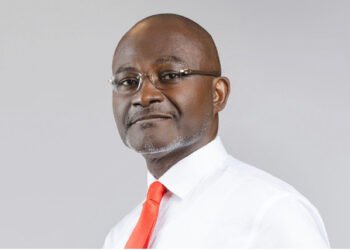The Chamber of Cement Manufacturers (COCMAG) has defended the recent increases in cement prices.
The Chamber attributed these price hikes primarily to the depreciation of the Ghanaian cedi against the US dollar and the rising costs of production.
This response follows a call from the Minister for Trade and Industry, K. T. Hammond, who urged immediate intervention by the Cement Manufacturing Development Committee (CMDC) to address the spike in cement prices.
Minister Hammond specifically requested Ghanaian cement manufacturers to promptly reverse the recent price increases.
In a statement signed by Dr. George Dawson-Ahmoah, CEO of the Chamber of Cement Manufacturers (COCMAG), the chamber elaborated that the cement industry heavily relies on importing raw materials priced in foreign currencies, particularly the US dollar. This dependency on foreign materials has driven up costs for manufacturers.
“Additionally, some tariffs, levies, and taxes imposed by other authorities such as the Ghana Ports and Harbours Authority are also dollar-denominated, further exacerbating expenses,” a part of the press release said.
The Chamber of Cement Manufacturers explained the rationale behind adjusting cement prices, citing the importance of maintaining operational sustainability and product quality.
According to COCMAG, the need to partially offset increased manufacturing costs stemming from currency devaluation and other external factors necessitates these price adjustments.
While acknowledging that these new prices may impact consumers, the chamber emphasized its commitment to delivering quality cement at fair prices.
COCMAG assured customers that once economic conditions stabilize, cement prices will return to normal levels. Currently, prices hover around GH₵ 87-120 depending on the grade and brand.
“Acknowledging the understanding and support of all stakeholders, the Chamber reaffirms its dedication to Ghana’s construction sector development amidst these challenges.”
Chamber of Cement Manufacturers
Global Cement Outlook
According to recent research by On Field Investment Research, the global cement industry is poised for varied growth trends between 2024 and 2030.
“The cement industry is poised to sustain its gross margin expansion, primarily driven by higher cement prices and significantly reduced fuel costs, despite anticipated weak global demand.”
On Field Investment Research

Projections indicate flat demand overall, with notable increases expected in regions such as the Middle East, India, and Africa. Conversely, Turkey, China, and Europe are anticipated to exhibit weaker market conditions during this period.
Specifically, Sub-Saharan Africa is forecasted to experience substantial growth of up to 77% by 2030, followed by India at 42% and North America at 20%.
These forecasts signal dynamic shifts in demand patterns within the global cement market.
The research stated that following the post-COVID-19 era, the cement industry encountered significant production cost rises, attributed to fuel, electricity, and international freight rates escalations.
Moreover, increased marginal CO2 costs for volumes exceeding free allocations further contributed to upward pressure on cement prices.
Key trends within the global cement industry include continued expansion efforts by Chinese producers seeking to diversify beyond the saturated domestic market.
Chinese companies are actively pursuing leadership positions in overseas markets, reflecting a broader strategy of international portfolio diversification.
Meanwhile, European multinationals are expected to divest from emerging cement markets like India, Africa, Turkey, and China.
This strategic shift creates openings for regional and local players to assume leadership roles, expand market presence, and leverage innovative technologies and business models.
Prominent industry leaders such as Dangote, Adani, Oyak, Votorantim, Vissai, CNBM, Martin Marietta, and TCC are poised to capitalize on these evolving dynamics.
They will continue to invest in cement assets and alternative business models strategically, positioning themselves as frontrunners in the evolving global cement industry landscape.
READ ALSO: USAID-Funded Power Africa WAEP Celebrates Five Years of Achievements



















